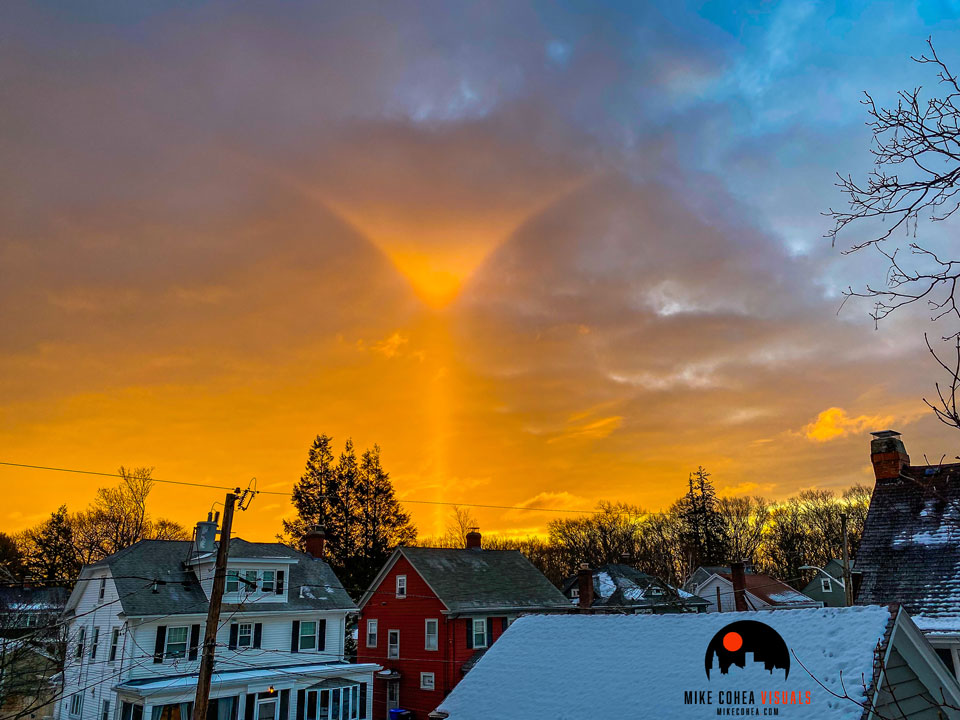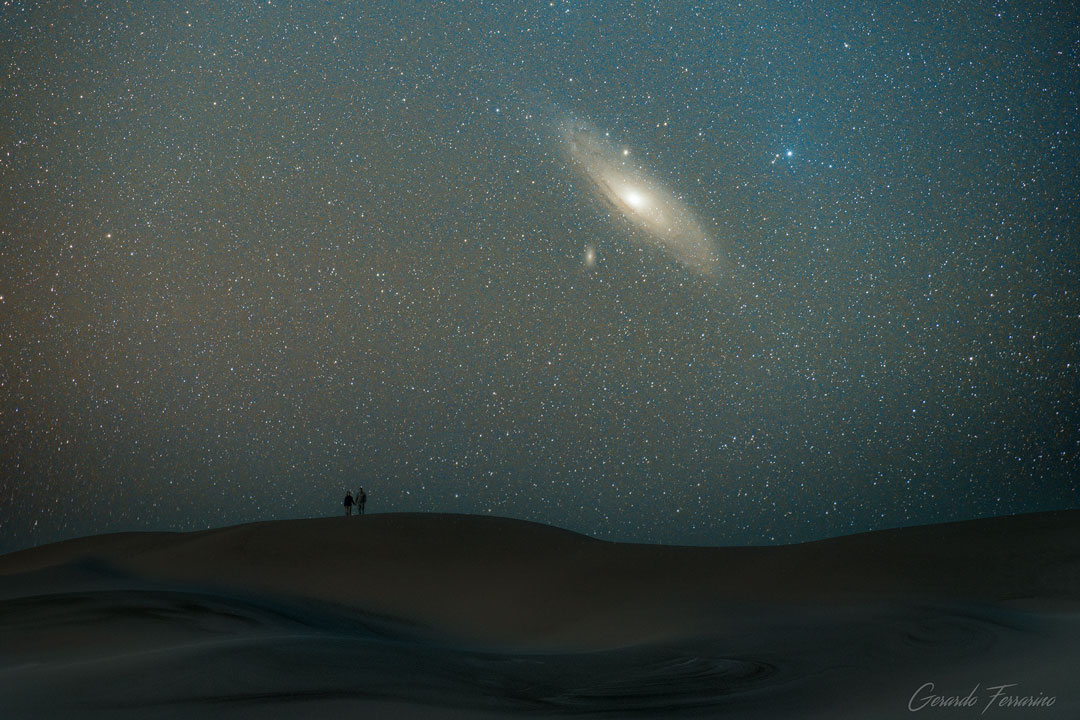After seeing links to the site Astronomy Picture of the Day (APOD) occasionally on my Facebook friends’ posts over the past few months, I added it to my morning regimen of sites to check every day.
Here’s today’s. Click for the site itself with a larger photo and an explanation (and click their photo for a really big photo).
This is a sun pillar, a rare sight that even more rarely fans out at the top. They “are known to be caused by sunlight reflecting from wobbling, hexagon-shaped ice-disks falling through Earth’s atmosphere.” And so on.
As I commented to one of my Facebook friend’s (Moshe Feder’s) post about this:
Throughout most of human history, and for most people alive today, this would be taken as a supernatural event, confirming whatever gods or angels they had been taught to believe in as children.
And of course, until a couple centuries ago, everyone thought that about rainbows.
\\
Here’s another one, with a different implication.
This is a mosaic of photos taken over many years, of a relatively large patch of the sky. The photo covers enough of the sky to include the entire constellation of Cygnus. Deneb is at left; faint lines connect the other stars in the so-called Northern Cross.
This illustrates something I never realized before, even after having been an astronomy fan and student since the 6th grade. I’ve always had the impression that the impressive photos we see of far-away galaxies and nebulae were photos of tiny patches of sky, magnified to see what was too small to see with the naked eye. No: these nebulae (and even galaxies like Andromeda), are relatively *enormous* in a view of the night sky, if only we had the eyes to see them. (The photo here includes the entire North America Nebula, in lower left, for example.)
If we had more sensitive eyes — which we don’t because our eyes, though sensitive over a wide range of brightness, have been evolutionarily adapted to our place here on Earth — we would see magnificent views like this.
It’s another lesson in how human perception of reality is limited. We can expand our perception of reality through our science and technology, our instruments to perceive what we cannot.
Here’s one more, of the Andromeda Galaxy, the famous M31, just visible with the naked eye on a dark night, but larger than you would think from that naked eye, or binocular, or telescope view.








